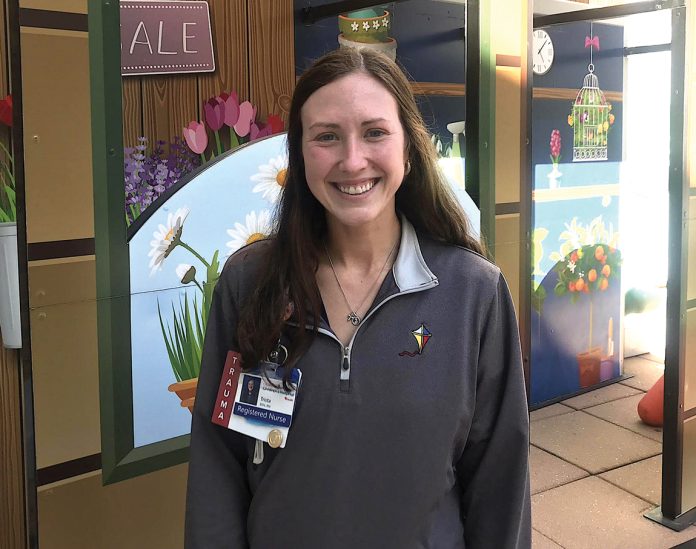
by James Coburn, Staff Writer
Trista Thomason, RN, said that respiratory syncytial virus (RSV) has been “extremely bad” for the past several months. The virus appears more like a common cold for adults, but the infection is much harder on children, said Thomason, who works in the pediatric intensive care unit (PICU) at Oklahoma Children’s Hospital – OU Health.
RSV presents an increased effort to breathe, she said. Oxygen requirements increase for children as the virus becomes increasingly difficult for their immune systems to combat infections. Children become less interested in eating. They begin using their entire body to breathe, she explained. (STORY CONTINUES BELOW)
https://oknursingtimes.com/jobs/job/rn-registered-nurse-nurse-navigator-advanced-heart-clinic/
“Their immune system is just not as developed as an adult,” she said. “So, that has been really hard for the last several months. I feel like with COVID, kids just weren’t as exposed to as many germs because people were wearing masks and they were kept at home. But throughout the last year kids are being exposed to more germs.”
Children with RSV may develop a temperature, but not all the time, she said. They will appear to be gasping for air as if they can’t get enough oxygen, she explained.
Putting a baby at ease by reasoning with them is the hardest part about working in the PICU at Children’s Hospital, Thomason added. A toddler or infant gasping for breath will not understand what is happening to them, Thomason said. She cannot tell them that the needles being poked at them will make them feel better. And, telling mothers they cannot hold their sick babies when they have a breathing tube or intravenous lines is not easy for anyone, she continued.
“I feel the thing that helps me the most with the parents is explaining everything,” she said. Parents read their child’s expressions effectively. She encourages parents to ask questions when there is uncertainty.
“Sometimes kids will be here for a couple of days, and sometimes they will be here for six months to a year,” Thomason said.
A child will usually spend three to four weeks in the PICU before going to the med/surg floor which also serves as a step-down unit for RSV patients.
“I just try to involve the parents as much as I can,” Thomason emphasized.
The family of nurses will see trauma in their patients’ lives which at times, their own families and friends cannot resonate with, Thomason said.
“I’ve made some really dear friends in the PICU that understand on a completely different level because of what we experience together. We’re always on the same team,” Thomason said. “Everyone makes us feel like they’re there to help you. They want what’s best for you. We’re not only family, but we’re also friends outside of work.”
Thomason said it’s a natural fit for her nursing career to focus on pediatric care. As the oldest of three sisters, Thomason’s motherly instinct deepened after her sister was in a car accident, she said.
“She was five and actually came to Children’s Hospital,” Thomason said. “Our family had a great experience with all the nurses that took care of her and took care of my family and made sure we all felt we knew what was happening — that we knew she was being well taken care of.”
Thomason’s experience drew her to help children at the Oklahoma City hospital’s PICU.
“I think they’re really funny and sweet. They’re much littler than adults, easier to take care of and easier to reason with,” she said.
She has worked in the PICU unit since July of 2021 after serving her first year as a nurse at Lakeside Women’s Hospital | INTEGRIS Health. Thomason earned her Bachelor of Science in Nursing degree in 2020 at Southern Nazarene University.
“SNU was wonderful, and I loved it. I made a lot of friends and met a lot of really awesome people,” Thomason said.
Today, watching children’s health improve is her favorite part about being a nurse. Nurses at Children’s Hospital often see children feel at their worst. But children are also resilient.
“It’s awesome to watch them get up and literally walk out the doors,” she said.
One girl about 4-5 years old who had been extremely sick for weeks recuperated well enough to return home. One day she returned to Children’s Hospital, spoke with Thomason and other nurses and gave them hugs.
“I think that is the part that is most meaningful, knowing we did something to help her to get better — to give her, her life back that she previously had before she got sick,” Thomason said.
For more information about Oklahoma Children’s Hospital – OU Health, visit: https://www.ouhealth.com/oklahoma-childrens-hospital/












